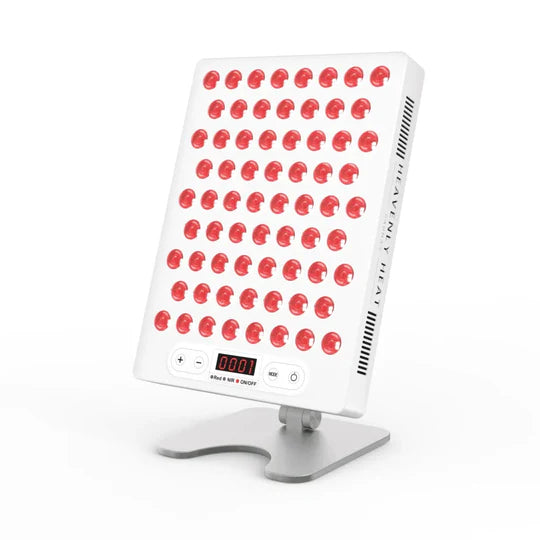Can You Put Epsom Salt in an Ice Bath?

Ice baths are known for reducing inflammation and speeding up recovery, but what if you could make them even more effective?
The idea of adding Epsom salt might sound tempting, but can you really combine both benefits? Adding Epsom salt could enhance your recovery, but is it safe and effective? Let’s break it down.
What is Epsom Salt?
- Epsom salt is just a natural mineral: Epsom salt is scientifically known as magnesium sulfate and is made from magnesium, sulfur, and oxygen.
- It works best when you mix it in warm water: Dissolving Epsom salt in warm water allows your body to absorb it through the skin, which may help relax your muscles and calm your mind.
- People have used it for healing for hundreds of years: Epsom salt was first discovered in the 1600s in a town in England called Epsom, where people believed it helped with pain and stress.
- Many celebrities use it to relax and look their best: Famous people like Gwyneth Paltrow , Jessica Biel, and Victoria Beckham use Epsom salt baths as part of their wellness routines. Paltrow takes one every night, and Biel even used a lot of it before a big event.
- It’s popular because it helps your body feel better: People love Epsom salt because it helps reduce bloating, ease muscle soreness, and make you feel more relaxed overall.
What is an Ice bath?
- Ice baths are simply sitting in really cold water for a few minutes: An ice bath is a cold therapy treatment where you immerse your body in ice-cold water, typically around 50–59°F (10–15°C), for several minutes.
- The cold water helps reduce swelling and eases muscle pain: The cold causes your blood vessels to tighten, which helps bring down inflammation and numbs sore muscles.
- After warming back up, your blood flows better and recovery speeds up: When you get out and your body returns to normal temperature, blood flow improves, which helps heal the muscles faster and reduces long-term damage.
- LeBron James uses ice baths to recover faster after games: Top athletes like LeBron James use ice baths regularly after games to reduce soreness and stay at their best physically.
- Michael Phelps says cold therapy helps him stay sharp and recover: Olympian Michael Phelps relies on ice baths not only for his body, but also to clear his mind and stay focused between events.
- Even Usain Bolt used ice baths to stay ready for the next race: After winning races, Usain Bolt used ice baths to keep his muscles fresh and ready for his next challenge.
- People with heart problems or cold sensitivity should avoid this: Ice baths aren’t safe for everyone—those with heart issues or who react badly to cold should steer clear.
Can You Put Epsom Salt in an Ice Bath?
Yes, it’s safe to add Epsom salt to an ice bath , and it can make the experience even more beneficial . The salt helps boost circulation , reduce inflammation , and ease muscle soreness .
It also promotes relaxation , supports natural detoxification , and relieves arthritis pain. Combining Epsom salt with ice water enhances recovery and soothes your body .
Benefits of adding Epsom Salt in an Ice Bath
Boost Circulation
Adding Epsom salt to your ice bath can improve circulation . The magnesium in the salt helps relax your muscles and blood vessels , allowing blood to flow more freely. This boosts recovery by reducing inflammation and helping your muscles heal faster .
Ease Inflammation
Adding Epsom salt to an ice bath can help reduce inflammation and relieve muscle soreness . The magnesium in Epsom salt is known for its muscle-relaxing effects , which can ease tension and lower inflammation .
Dr. A. Brion Gardner explains that ice baths are great for soothing sore muscles , and combining them with Epsom salt enhances the recovery process , making you feel more relaxed and refreshed .
It Helps Relieve Muscle Soreness
Adding Epsom salt to an ice bath may help alleviate muscle soreness . According to Dr. Andrew Weil , while Epsom salt baths are popular for soothing aches , the true benefit often lies in the warm or cold water itself.
The salt might offer additional comfort , but the combination of cold therapy and magnesium absorption may enhance recovery , providing relief after intense physical exertion .
Aids in Relaxation
Adding Epsom salt to an ice bath can help your body relax by easing muscle tension . The magnesium in the salt calms your nerves , helping to reduce stress .
The cold water, along with Epsom salt, also helps lower inflammation , making you feel more relaxed overall .
Promote natural detoxification
- Cold water helps your body flush out waste naturally: Ice baths don’t just help with sore muscles, they also boost circulation, which supports your body in clearing out toxins more effectively after workouts or stress.
- Epsom salt makes your ice bath even better for detox: When you add Epsom salt to the ice bath, you’re not just relaxing muscles, you’re also helping your body get rid of waste and harmful substances more efficiently.
- Magnesium from Epsom salt helps clean your system: Epsom salt contains magnesium, and according to Dr. Mark Hyman, it’s one of the best minerals for detoxifying the body and supporting your natural cleansing systems.
- Helpful when you’ve had alcohol or heavy food: Dr. Hyman also recommends Epsom salt baths after drinking alcohol or overeating. They help you sweat out toxins and restore balance in the body.
Reduce Pain for Arthritis Patients
A study by Dinesh Chandra Damor et al. investigated the effects of Epsom salt on arthritis patients and found it to be effective in reducing pain and improving functional performance .
The research showed that patients who used Epsom salt experienced significant pain relief , with a notable decrease in their pain scores .
How much Epsom salt to add to an ice bath?
Yes, you can put Epsom salt in an ice bath! Dr. Mark Hyman recommends using 2 cups of Epsom salt for its powerful detoxifying and soothing properties.
To add it to an ice bath, dissolve the salt in warm water first, ensuring it mixes thoroughly, and then pour it into the ice bath for optimal recovery benefits.
What are some alternatives to Epsom salt in an ice bath?
Alternatives to Epsom salt in an ice bath include essential oils and baking soda. Essential oils like lavender or eucalyptus can enhance relaxation and provide a soothing aroma.
Baking soda helps soften skin and neutralize toxins , making it a gentle option for sensitive skin. Both options offer unique benefits, complementing the therapeutic effects of an ice bath.
Who should not use an Epsom salt bath?
Epsom salt baths are beneficial for many, but certain individuals should avoid them for safety reasons.
Avoid with Kidney Issues: People with kidney problems should consult a doctor before using Epsom salt baths, as magnesium absorption may cause complications due to impaired kidney function.
Consult for Heart Conditions: If you have heart problems or high blood pressure, seek healthcare advice before using Epsom salt baths, as magnesium may affect heart rhythm and blood pressure.
Pregnancy Precaution: Pregnant women should consult a healthcare provider before using Epsom salt baths, as excessive magnesium absorption may lead to complications like low blood pressure or premature labor.
Avoid with Open Wounds: People with open wounds should avoid Epsom salt baths, as the salt may irritate skin, delay healing, and increase the risk of infection.
Conclusion
Adding Epsom salt to an ice bath combines the benefits of both cold therapy and magnesium absorption, enhancing recovery by boosting circulation, reducing inflammation, and easing muscle soreness.
While it’s generally safe for most people, individuals with kidney or heart issues, or those who are pregnant, should consult a healthcare professional before using Epsom salt.
For those seeking deeper relaxation or relief from arthritis pain, incorporating Epsom salt could be a beneficial addition to your recovery routine.













































